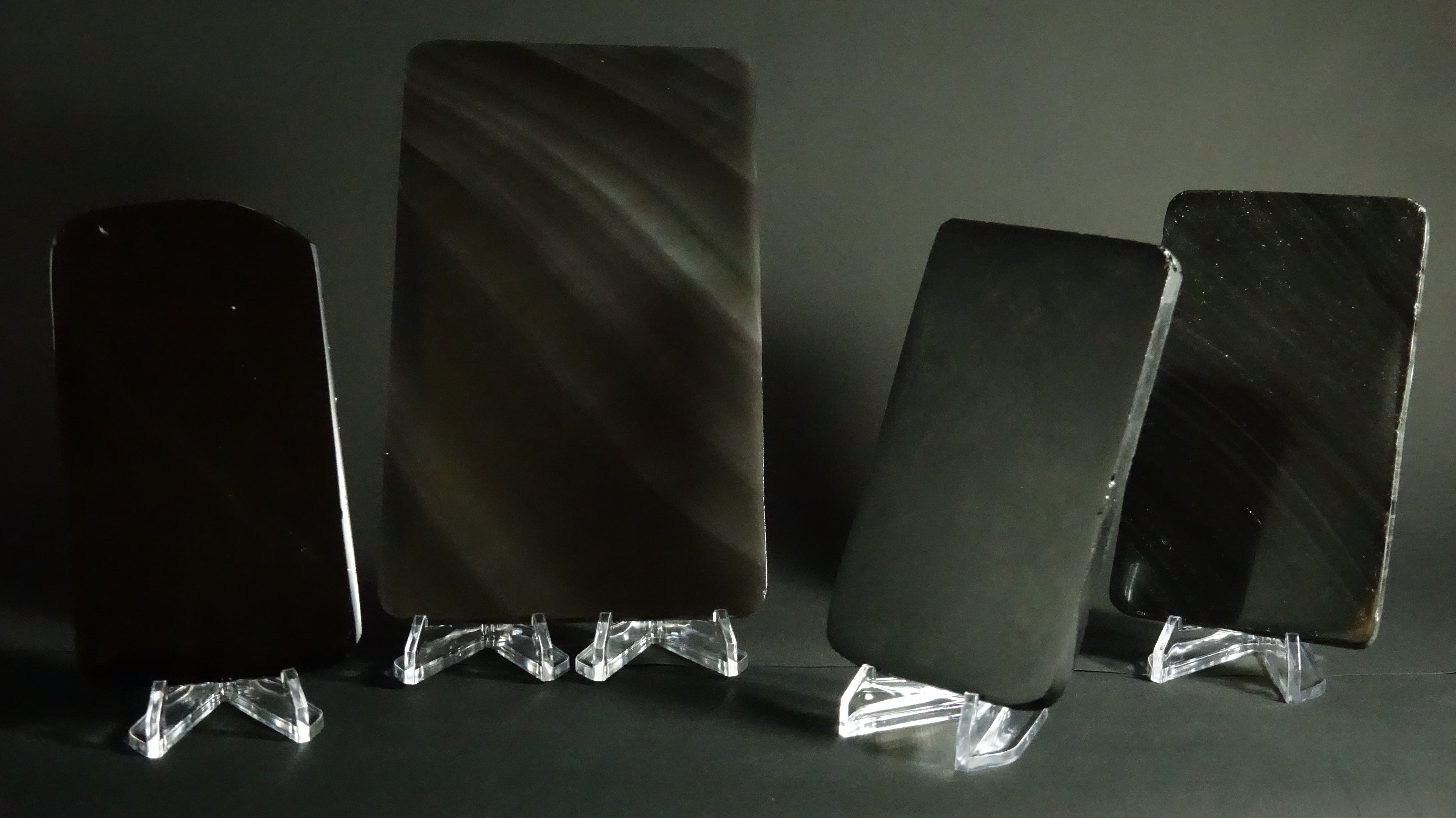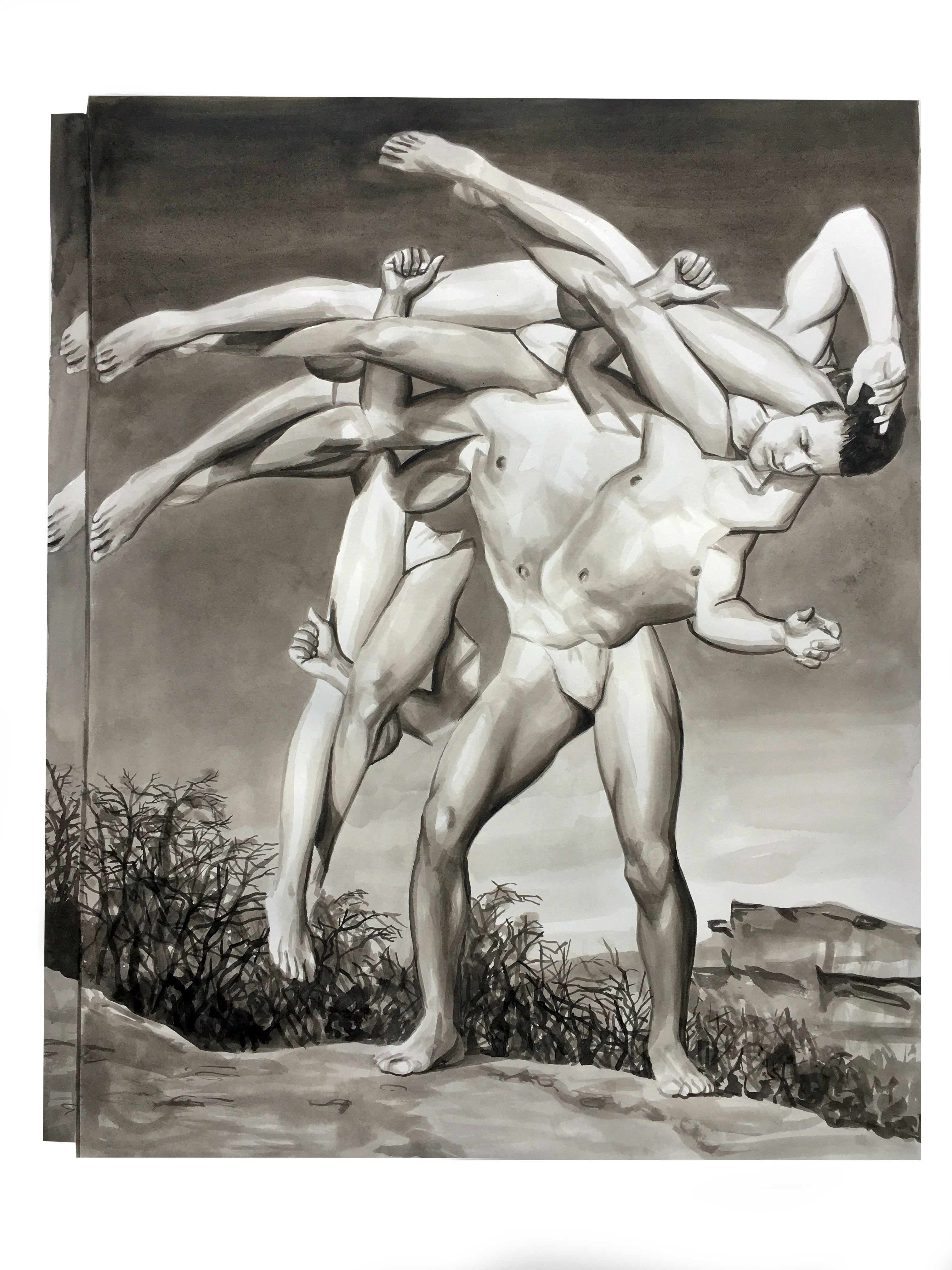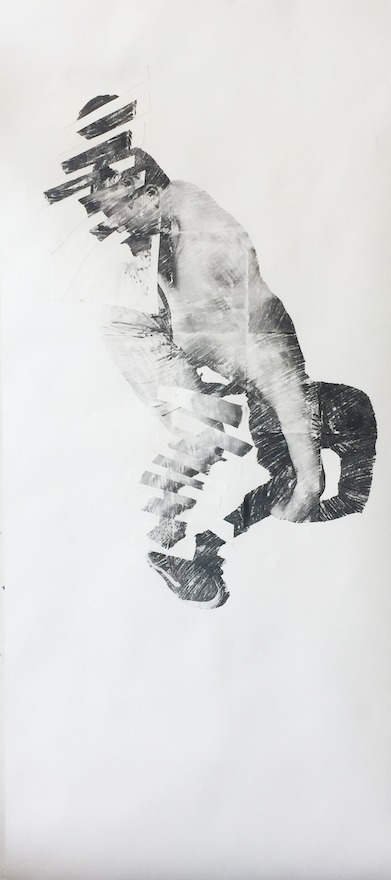
Artists: Emily C. Thomas, Melissa Wilkinson, and Meredith Potter
Curated by Lindsay Donnelly-Bullington
The COVID-19 crisis has brought many lives into an increasingly digital space. Zoom meetings, grocery pick-up, and, well, online art exhibitions are the new normal, for the time being. If the United States is successful in flattening the curve, the days of quarantine and shelter-in-place orders may expire, but what will we take from this time into that new world? Will it be the comfort of teleconferencing or the ache for meaningful connection in shared physical space? Both? Something else?
This exhibition highlights the work of three artists whose pre-coronavirus works center around that anxiety about the world we will make. Meredith Potter’s “Invisible Monsters” series emphasizes a fragmented reality as seen through the curated lens of social media. Melissa Wilkinson similarly explores the themes of the fractured and hyper-consuming gaze created by an image-abundant culture as it interacts with queer identity formation. Emily C. Thomas’s work finds a spiritual impulse in our technoculture, but a suspicious spirituality at that.
Virtual reality revolutions have been anticipated before – once upon a time, we were all supposed to be in meetings through the online role-playing game/virtual meet-space Second Life, or the many similar platforms that allowed users to digitally gather. But our virtual work-from-home landscape looks much more boring than our hulking purple-skinned avatar and much more like work did before we took it home. The works by these three artists may not make predictions for where we go from here, but they have a stake in how we get there.

Photographic documentation of obsidian tablets
2018-present
Documentation from the Interactive Project "Shew Stone"
The Shew Stones exist in a variety of forms – here presented as photographical subjects, the tablets exist as interactive social practice props for participants to hold and gaze into. Obsidian blocks shaped into tablets comparable to cell phones or tablet computers find similarities in the ancient spiritual practice of obsidian gazing as a clairvoyant tool and modern technology enabling near-constant access to information and direct channels of communication. Beyond the shape, the stone’s physicality reminds one of the powered off screen, bringing to question the power inherent to the communications devices beyond that enabled by LTE.
Phototransfer on Stonehenge
54 x 66 inches
2019
Invisible Monster No. 2
The works in the “Invisible Monster” series begin their cycle as photographs digitally altered by the artist to create unrecognizably human figures. These images are then transferred onto imposingly large columns of paper, providing the work with an undeniable physicality. This duality between digital dehumanization and physical reconstruction becomes a theme of the series, examining similar processes at play in social media’s bastardized presentation of supposed realities.

Inkwash on paper
22 x 30 inches
2020
Lift
Initially using a similar process as Potter through digital reconstruction of photographs, Wilkinson’s work begins with found images rather than directed portraits. The image here presents a manipulated masculinity as constructed by this posed pinnacle of strength. The theatricality of the figure’s initial pose is understood as queer through the collaged contact with his own male figure, illustrating a queer sensibility in the construction of masculinity through celebrity. This complicates the influencer narrative, constructing individualized surrealities from celebrity image, informed by but unintended to recreate the framed confines of the public-facing presentation of self.

Boca Bouquet
The piece represented here indicates at once an alternative to and a further symptom of suffocating digitization of everyday life. Shelter-in-place and safer-at-home orders have altered as well the human relationship with the outdoors immediately surrounding our home habitats, and the viewer can find resonance in the intricate and inseparable relationship between humanity and nature represented in the image. Through this image, as well, the artist constructs an alter-human and an alter-nature. Impossible beings are represented in the bouquet, a collage of parts alienated from the connection to parts which give them utility. In the construction of online representations of full personalities, these functional interrelations may also be lost.
Looping digital animation
2013
Please Take a Seat in My Virtual Reincarnation Waiting Room
The artist writes the following: "I see the virtual waiting room as comparable to everyone stuck at home, what was once our physical, public presence, is now limited to the domestic, solitary sphere with all interactions occurring through the digital interface. Somewhat indistinguishable, the walls of the virtual waiting room are constructed of the repetitively, mirrored Vedic image of the transition of the soul from life to death, from tomb to womb. The idea of a soul is a very important component of my work. When we use the internet our data is compiled, analyzed towards the goal of creating AI. Under the prevailing view of scientific materialism, our minds, bodies and our health are seen as machine-like, and the idea of the soul has been ignored. However, even if a successful imitation of human consciousness through digital algorithms occurs, what remains is the inability to duplicate the soul (as of yet at least!). In the western world, I think art is one of the few surviving socially permitted outlets for people to express the existence of the soul. The fact that the video can be perpetually looped also adds to a sense of endlessness that is felt during the process of waiting."

Phototransfer on Strathmore
42 x 96 inches
2019
Invisible Monster No. 5
The “Invisible Monster” series is incredibly physical in the scale of the works, but the process of getting the images to the paper involves digital and technological mediation. Though Potter constructs the initial images of the works through a computer, the artist admits a frustration that arises from working with digital art methods. But despite the explicit critique of online modalities of expression, the works are not Luddite, coming out of that interplay between the digital and physical worlds.
Inkwash on papaer
22 x 30 inches
2020
Spread
This digital-disruption-turned-painting reframes a posed vulnerability into something at once dehumanized and more authentic. The subject matter (and state of undress) is more something you would see on a finsta or “Close Friends” story than a primary account, but the digital world has made space for all such expressions. The image calls to mind the impulse against celebrity in the time of quarantine. The online presentation of gorgeously kept houses with miserable faces singing John Lennon songs does not inspire universal togetherness.
Phototransfer on Strathmore
42 x 96 inches
Invisible Monster No. 6
Under quarantine, the omnipresence of digital communications is easy grounds for hyperstimulation coexisting with monotony. The overextension of the limbs and head in this piece provide a sense of drowning in technology. The absence of color in the series reminds the viewer of an ultimate monotony of endless scrolling and of a filtered surreality presented by social media.
Photographic documentation of obsidian tablet
2018-present
Documentation from the Interactive Project "Shew Stone"
The stone is earlier presented in a commercial context and here in a utilitarian context. The stones imply a spiritual materiality similar to the faux-invisibility of telecommunication technology. Though the servers and satellites are kept from immediate view, this mock-telepathy is constructed, too, of stone and metal and earth.